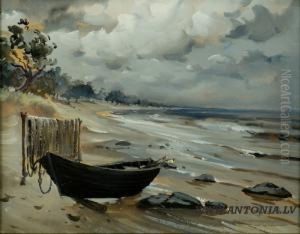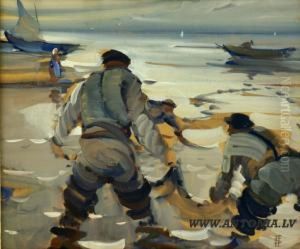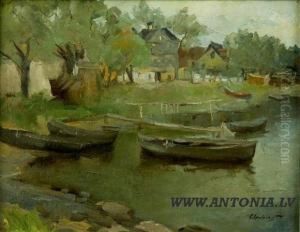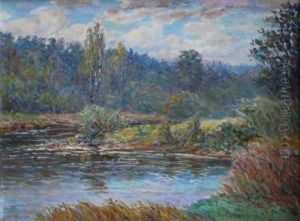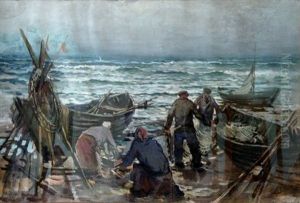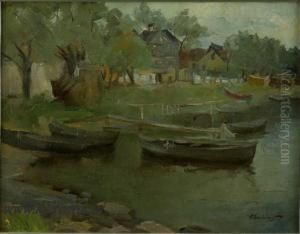Arnolds Spalvins Paintings
Arnolds Spalvins was a Latvian artist known for his contributions to painting and graphic art. Born on April 25, 1925, in Riga, Latvia, he grew up during a period of significant political turmoil, which included the country's occupation by the Soviet Union, Nazi Germany, and then once again by the Soviet Union after World War II. These events inevitably influenced his artistic expression and themes.
Spalvins studied at the Latvian Academy of Arts in Riga, where he honed his skills in painting and graphic arts. He graduated in 1951, at a time when Latvia was part of the Soviet Union, and thus, his artistic career was shaped within the confines of socialist realism—the state-sanctioned art style that dominated Soviet aesthetics at the time. However, like many artists of his generation, Spalvins found ways to infuse his work with personal and national motifs, subtly challenging the limitations imposed by the regime.
Throughout his career, Spalvins exhibited his work extensively, both within the Soviet Union and abroad, as cultural exchanges were possible during periods of political thaw. His oeuvre includes landscapes, still lifes, and portraits. He is especially noted for his adept use of color and light, which brought a distinctive warmth to his depictions of Latvian countryside and urban scenes. Spalvins also made significant contributions to graphic art, with his illustrations and printmaking works being celebrated for their technical skill and expressive power.
In the later part of his career, after Latvia regained independence in 1991, Spalvins's work reflected the newfound freedom of expression. His style became more diverse, and he took an active role in the reinvigoration of the Latvian art scene. Spalvins's legacy is preserved in his artworks, which are held in collections of the Latvian National Museum of Art and various galleries around the world.
Arnolds Spalvins passed away on October 29, 2011, leaving behind a rich body of work that continues to be studied and admired for its artistic merit and historical significance. His contributions to Latvian art are particularly valued as a testament to the resilience and creativity of artists working under oppressive political conditions, and his work remains an important part of the cultural heritage of Latvia.
